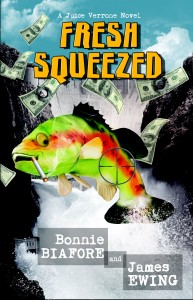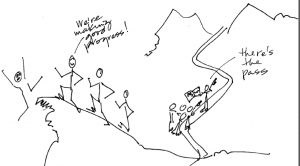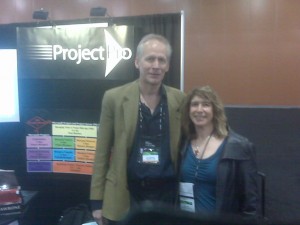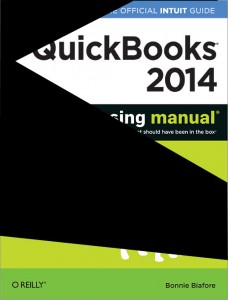It’s Just a Plan
Plans are nothing; planning is everything. — Dwight D. Eisenhower
Project managers love to plan. Sometimes even the best project managers fall in love with their plans. When they get too committed to those plans, however, they lose the ability to respond nimbly to the curve balls thrown in every project. Nimbleness is one of the key tools in a project manager’s toolkit.
 The ephemeral nature of plans is easy to remember on large projects. But an overzealous adherence to a plan can sneak up at any time. I ended up clinging irrationally to a plan I made for one of my projects, ironically, recording movies for one of my Lynda.com courses, Managing Small Projects.
The ephemeral nature of plans is easy to remember on large projects. But an overzealous adherence to a plan can sneak up at any time. I ended up clinging irrationally to a plan I made for one of my projects, ironically, recording movies for one of my Lynda.com courses, Managing Small Projects.
I had constructed a tight schedule for myself. I was juggling several small projects: finishing work on QuickBooks 2013: The Missing Manual, recording my Lynda.com course, a conference for my fiction writing, and some fun to sharpen the saw. Here’s what it looked like:
Sept 6: Finish author review for QuickBooks 2013: The Missing Manual.
Sept 7-9: Attend Rocky Mountain Fiction Writers Colorado Gold Conference
Sept 9: Fly to California
Sept 10-12: Record Managing Small Projects course at Lynda.com’s studio in Carpinteria.
Sept 13: Fly home and go to Rocky Mountain Mystery Writers meeting.
Sept 14-16: Drive to Steamboat Springs and carouse with friends.
But things didn’t go as I had envisioned. (A fun example of plans getting derailed is a classic Preston Sturges movie, Unfaithfully Yours.)
Sunday morning, September 9, I was pestered by a slight dry cough. By Monday morning, I was in California and the cough had transformed into a sore throat, hacking cough, and what I think is called post-nasal drip. We spent five grim hours recording atrociously nasal and unenergetic audio voiceovers.
After twelve hours of sleep and a lot of cough and cold medicine, I went in Tuesday morning, and the recordings were even worse. By 10:30 am, my producer got out the hook and yanked me off the microphone. He asked me if I could stay an extra day or two. My initial response was “I can’t! I have all these things I need to do.” After all, I had a plan, a schedule to follow…But I went back to the hotel, rested up, and got another marathon night of sleep.
Wednesday morning, I felt a little better, sounded much better, and my brain was working again. I realized that the Mystery Writers meeting wasn’t a must-do–as much as I wanted to be there. What’s more, with the drubbing the cold was giving me, I wouldn’t be doing much carousing over the weekend either. The project manager in me had re-awoken. I told my producer that I could stay to record the course. (We actually started over from the beginning; and it was so much better the second time around.)
I even came up with a revised plan that accomplished some nice-to-haves I didn’t expect. I suggested that I fly home on Saturday so we didn’t have to guess when we would finish on Friday. Then, I could also visit friends who live in LA. Sure enough, we recorded Wednesday, Thursday, and wrapped up mid-day Friday. I drove to LA, caught up with my friends Friday night, and had a shorter drive to the airport Saturday morning.
In the case of my head cold, Helmuth von Motke the Elder’s planning quote might be the most appropriate: No battle plan survives contact with the enemy. While my original plan didn’t survive contact with a cold, the revised plan resulted in much better recordings and a wonderful visit with friends I thought I wouldn’t see.
Even though it’s “just a plan,” a plan is still essential to every project. Plans are meant to change, and part of the challenge (and fun) of a project manager’s job is to think of those curve balls as opportunities to respond well and perhaps even achieve something better.








